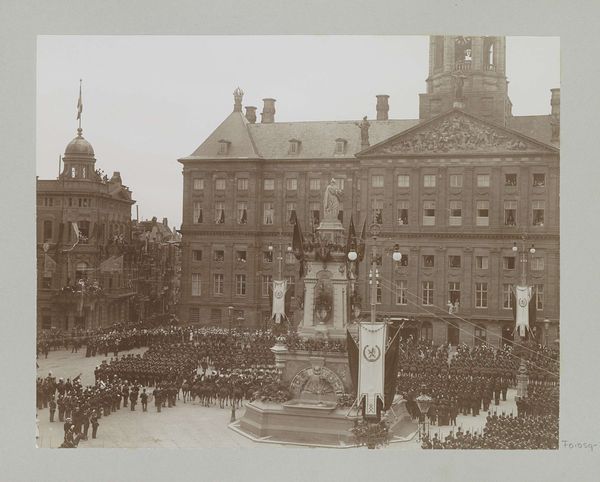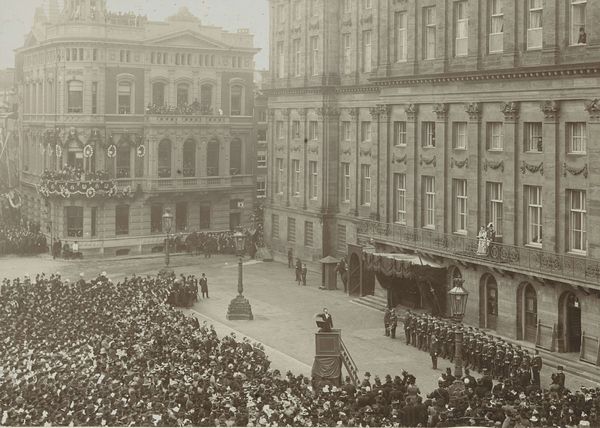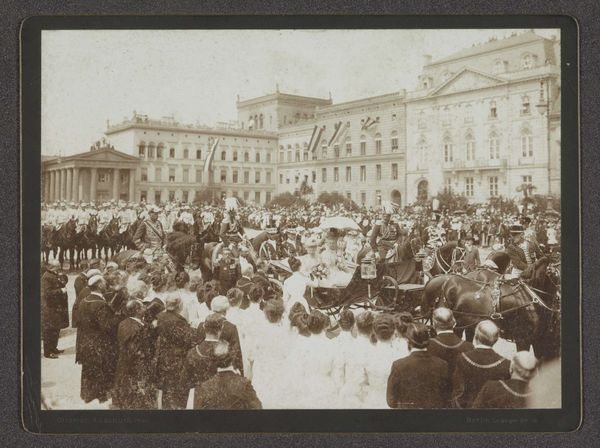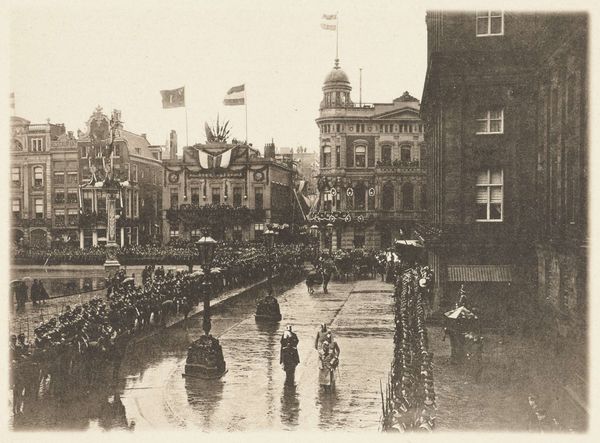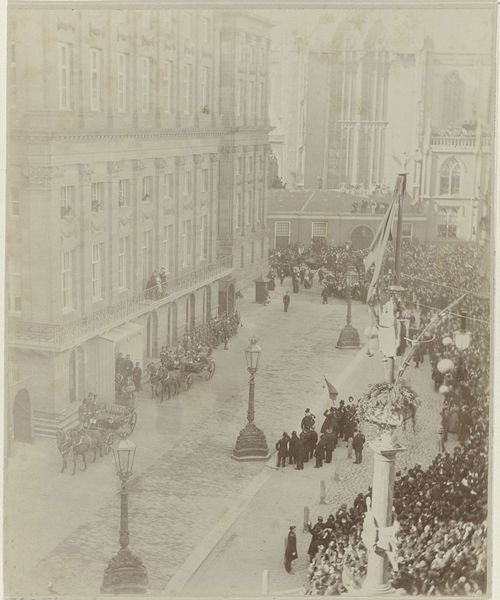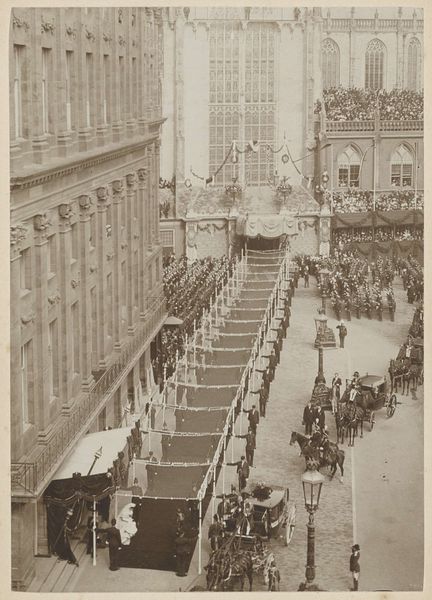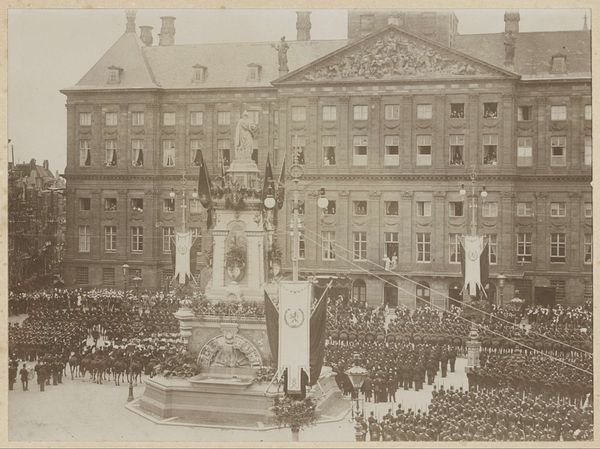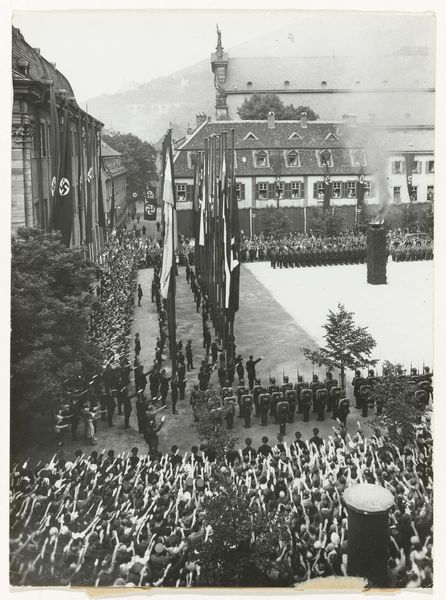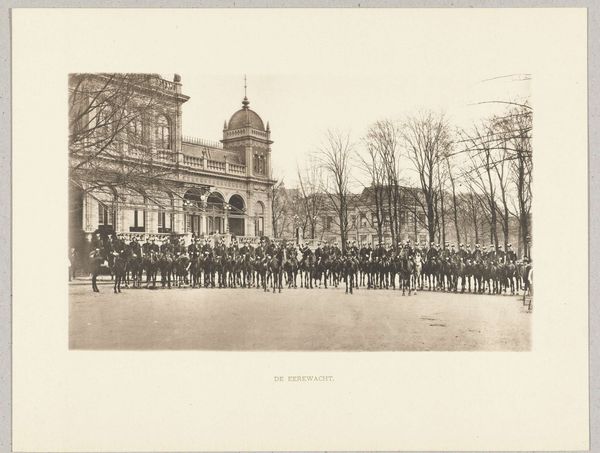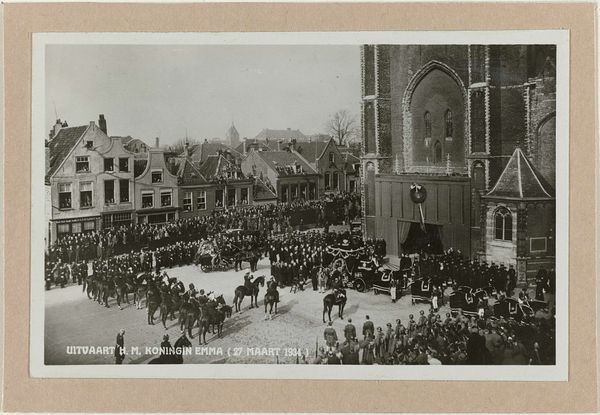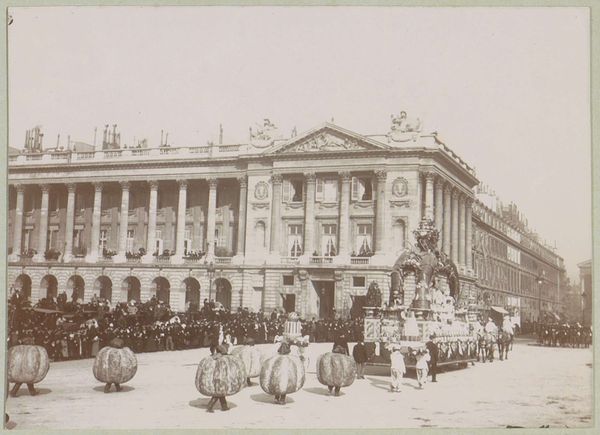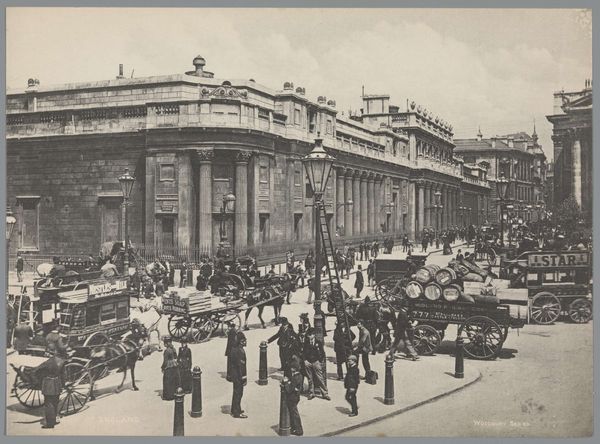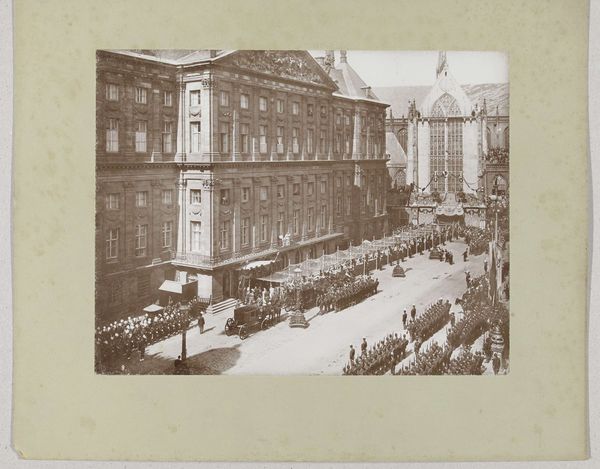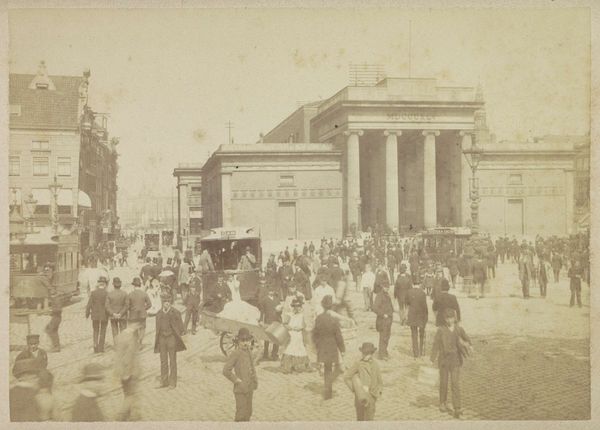
Dimensions: height 18 cm, width 24 cm
Copyright: Rijks Museum: Open Domain
Curator: Well, immediately there's this weight, this kind of oppressive formality. It’s grey, precise, and utterly devoid of joy, isn't it? It just sort of… looms. Editor: Indeed. This photograph, "Parade Duitse Militairen," by Weltbild G.M., captures a military parade sometime between 1936 and 1940. Notice the imposing architecture framing the event, the buildings themselves seem to stand in agreement, no? It's a stark portrayal of power and order in pre-war Germany. Curator: Order, yes, but an order built on something profoundly unsettling. The perspective is so… removed, clinical. It’s like viewing humanity through a telescope backwards. And those rows of soldiers! Identical. Faceless. Gives you the shivers. Editor: The photographic style reflects the broader artistic and political climate. The formal composition, the stark realism, it's all deliberately constructed to project an image of strength and control. The use of black and white further intensifies the feeling. We lose all depth, like a theatrical mise-en-scène where even human life takes a secondary role. Curator: Precisely! The humanity’s leached out. Even the classical statue in the foreground, half-cropped as it is, looks like it’s turning away in shame. As if it sees what’s coming. Almost tragic. Editor: Absolutely. And the crowds flanking the parade route? They're observers, but are they willingly participating in the spectacle? Or are they caught, implicated? These are important questions that the image poses about the society and state during this period, not to be simplified away or easily interpreted. It shows a specific urban layout serving as backdrop for an exercise of ideological assertion and control. Curator: Which just circles back to that pervasive grey… the lack of vibrancy, the spiritual void at the heart of it all. It’s not just a photograph, it’s a premonition. A stark reminder of how easily ideals can be manipulated and distorted. Editor: Agreed. It reminds us that photography can be a tool, a document, but also a form of rhetoric, shaping our understanding of the past. Curator: So, more than just documenting the parade, it captures a cultural climate, no? Editor: Indeed. By delving into the historical context and artistic choices behind such images, we can unravel the complex interplay between art, power, and society, leading to much broader interpretations.
Comments
No comments
Be the first to comment and join the conversation on the ultimate creative platform.
